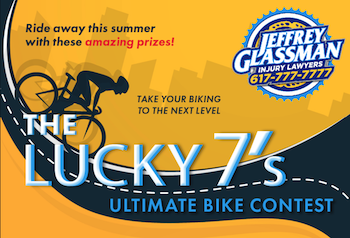Massachusetts Avenue
Massachusetts Avenue – known to locals simply as “Mass Avenue” – is one of the main arterial thoroughfares through Boston and several other cities and towns to the Northwest of Boston.
It runs 16 miles through gritty industrial zones, green suburban landscapes, gentrified townhouses, college campuses and busy commercial segments. It was part of this very same road that Paul Revere road his horse on his famous, “Midnight Ride.”
The makeup of the street has changed considerably since then.
The Boston Cyclist Safety Report listed Mass Avenue as one of the top locations for bicycle accidents in the city. Both the Boston Police Department and the Boston Bikes Accident Survey cited the road as the second-most common for bicycle crashes, behind Commonwealth Avenue.
The bicycle accident attorneys at Jeffrey Glassman Injury Lawyers and BikeAttorney.com know that about 60 percent of all bike collisions in the city occur at intersections – and there are numerous intersections along Massachusetts Avenue.
BPD reported that over a four-year period, there were 14 collisions at Massachusetts Avenue and Beacon Street and Massachusetts Avenue and Commonwealth Avenue, westbound. It was noted this was likely a low estimate, as the police department isn’t optimized to collect highly-specific crash data and not all bike accidents are reported.
Among the many bicycle accidents reported on Massachusetts Avenue or connecting intersections was the crash in August 2015 that claimed the life of 38-year-old Anita Kurmann, a renowned Boston surgeon and scientist who was struck and killed on a bicycle by a truck at the intersection of Mass Ave. and Beacon Street in August 2015.
The road bisects the Massachusetts Institute of Technology campus, passes through Central Square, curves around Harvard Yard, passes Harvard Law School and past Porter Square and then continues through Arlington and Lexington and into the Minuteman National Historical Park.
Other notable buildings and landmarks along the route:
- Symphony Hall, home to the Boston Symphony Orchestra
- Berklee College of Music
- Northeastern University
- The First Church of Christ, Scientist headquarters
- Cambridge City Hall
- Uncle Sam Memorial Statue
It’s also where a number of the City of Boston’s major offices are located, including the Boston Fire Department, the Boston Public Health Commission, the Parks and Recreation Department and the Inspectional Services Department.
Additionally, there are a number of direct connections along Massachusetts Avenue for the MBTA bus and subway routes. More recently, there have been numerous Hubway Station bike-sharing service locations placed along the route, including those at:
- Central Square
- Lafayette Square
- Harvard Law School
- Central Sq. Post Office
- MIT Hubway Station
- Linear Park at Mass
- Christian Science Plaza
- Harvard Square
- Porter Square
The fact that there are more bicyclists in these regions mean they have a greater likelihood of a bike accident. However, that does not mean bicycle accidents are inevitable. In fact, the majority of bicycle accidents in Boston are the result of collisions with vehicles, and most often it is the driver of the motor vehicle who is at-fault. Some common issues cited:
- Driver inattention/ distraction
- Driver impairment
- Driver failure to yield
Another common problem is that too often, many cars are parked illegally in the bicycle lane, leaving riders no choice but to ride in traffic. Delivery trucks also often park illegally in those bike lanes, and cars sometimes even drive in them – despite periodic electronic signs that clearly warn drivers to, “Watch out for Cyclists.”
Even where the bike lane is mostly clear along Mass Avenue, it is often shoehorned in against parking spaces within the “door zone,” leaving cyclists vulnerable to “dooring.”
There has been some talk of creating bollards that would keep undesignated traffic out of those areas, but that has not occurred. Officials have run periodic traffic enforcement in the region and new markings have been painted at a number of intersections.
At the Mass. Ave and Beacon Street intersection, officials plan to improve bicycle safety by:
- Trim the trees to limit visual obstruction.
- Optimizing traffic signal timing to allow large vehicles to make turns from the proper lane;
- Prohibit right turns on red from Mass. Ave. southbound;
- Mark the bicycle lane through the intersection;
- Add signs warning motorists to yield to pedestrians and bicyclists;
- Separate bike lanes from traffic with flexible posts;
- Relocate the MBTA bus stop on the southbound lane of Mass. Ave.
Many of these changes are still in the works – and it only represents updates to a single intersection along this long route. We still have a long way to go to improve cyclist safety along Massachusetts Avenue. If you have been injured on a bicycle along this road, we can help.
Contact the Boston Bicycle Accident Lawyers at Jeffrey Glassman Injury Lawyers and BikeAttorney.com at 617-777-7777.
 Jeffrey Glassman Injury Lawyers Home
Jeffrey Glassman Injury Lawyers Home



